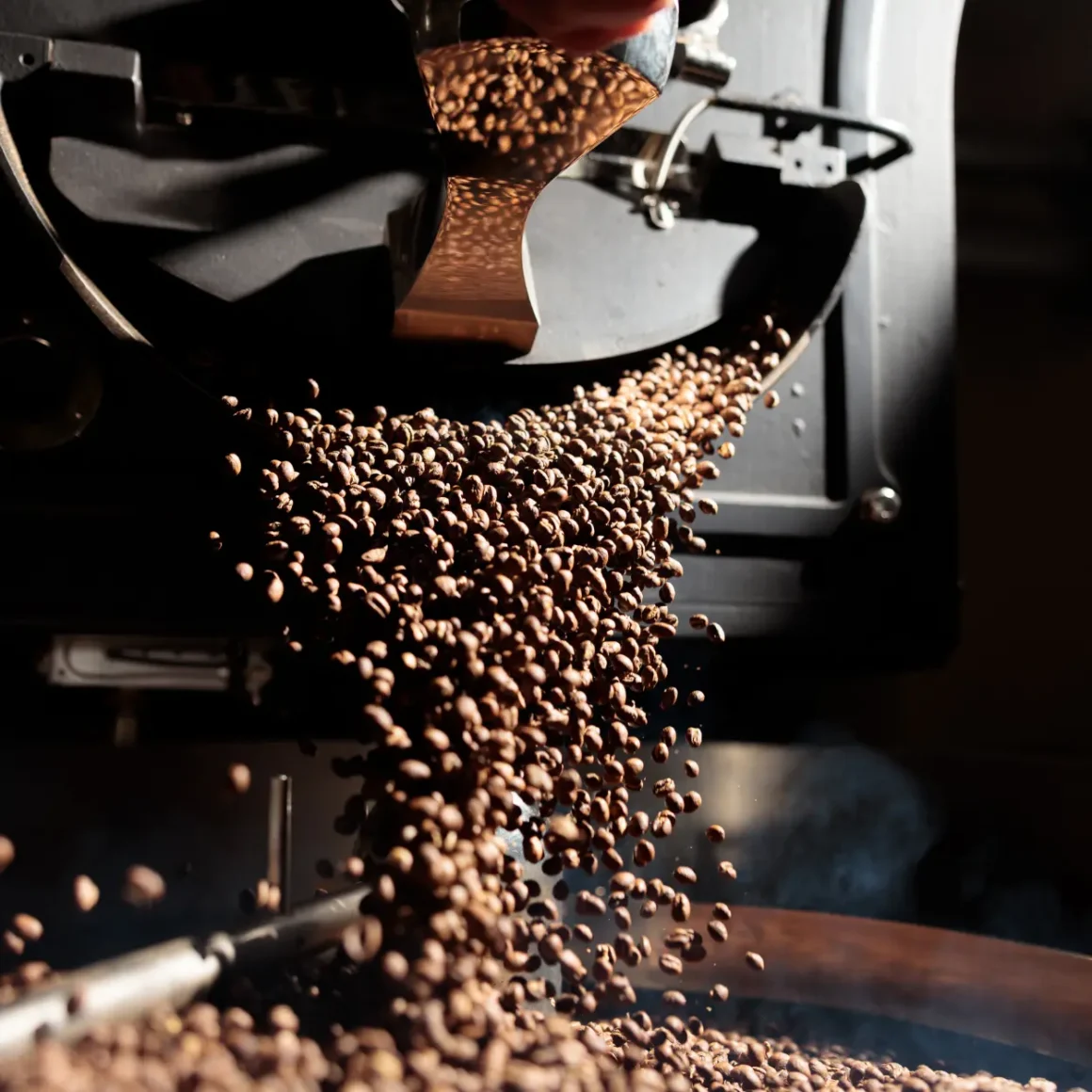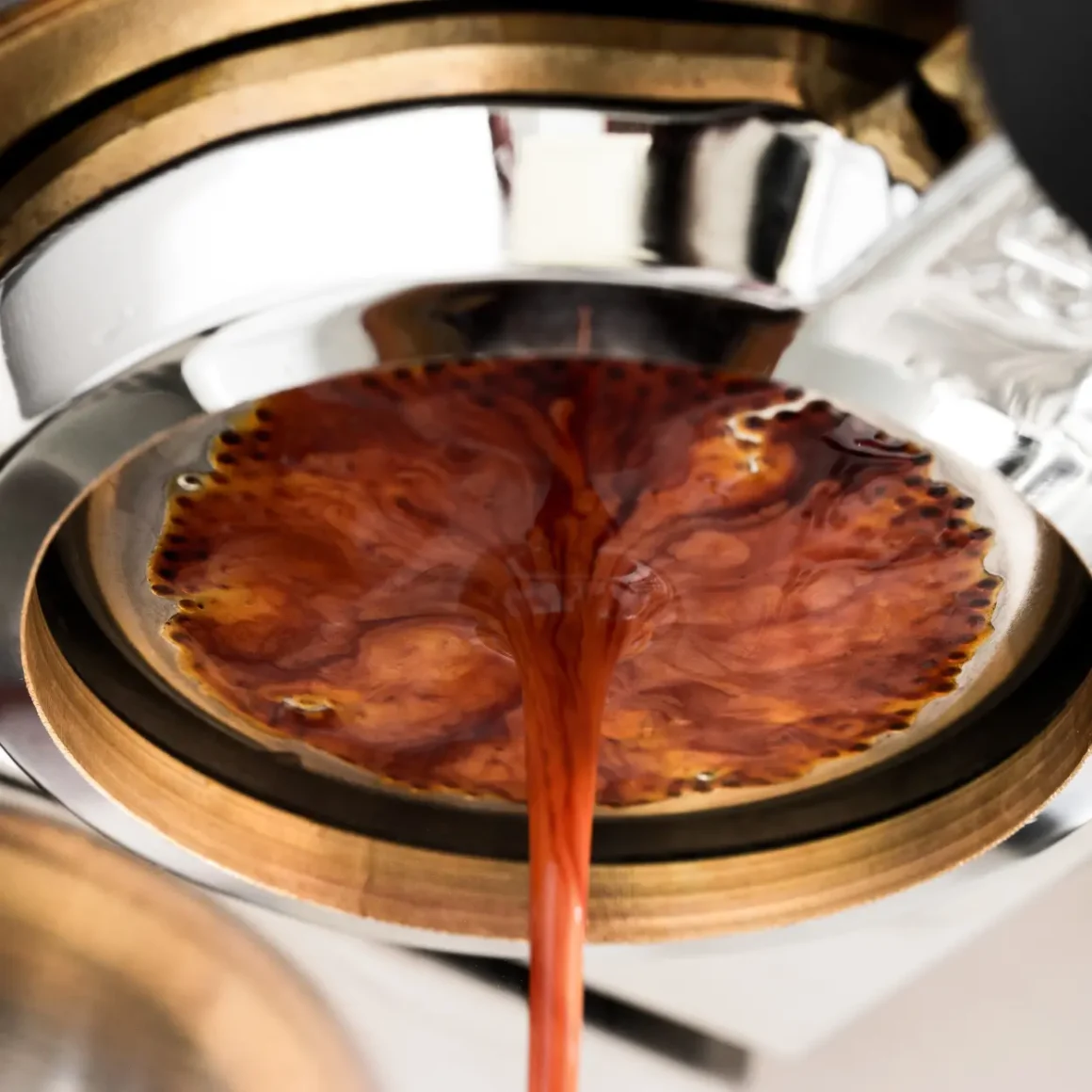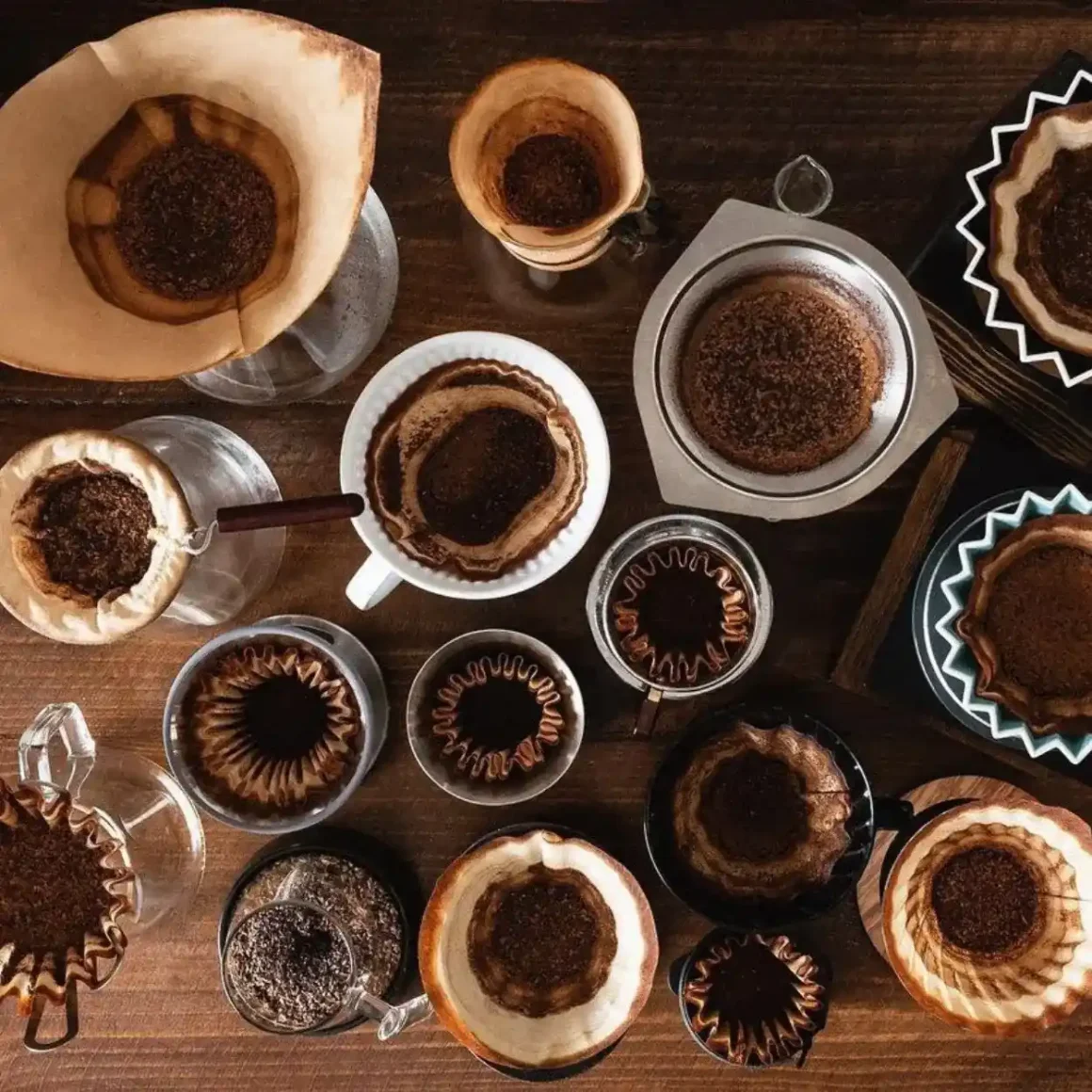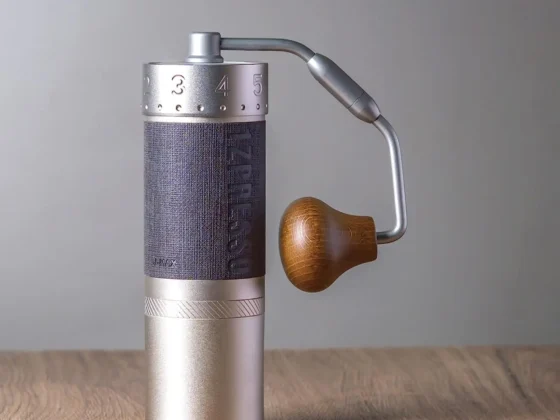If you’ve ever found yourself asking, Why does my coffee taste burnt? you’re not alone. This common question plagues many coffee enthusiasts, from beginners to experienced baristas. The taste of burnt coffee can significantly mar the enjoyment of what should be a pleasant and invigorating experience. Understanding the reasons behind this unwanted bitterness is essential for anyone looking to improve their coffee brewing skills. In this article, we delve into the various factors that contribute to a burnt taste in your coffee, offering insights and solutions to help you achieve a more balanced and enjoyable cup. Whether it’s adjusting grinder settings, understanding the impact of brewing times, or exploring the importance of bean quality and water temperature, this guide is designed to help you troubleshoot and refine your coffee-making process.
Don’t want to read? Press play and enjoy the article as an audio version below.
- Introduction & Key Takeaway
- https://app.mysoundwise.com/tracks/17015169544793792e.mp3
- Understanding Coffee Bitterness
- https://app.mysoundwise.com/tracks/17015170018305691e.mp3
- Common Causes of Burnt Coffee Taste
- https://app.mysoundwise.com/tracks/17015170483987910e.mp3
- Brewing Techniques to Avoid Burnt Coffee
- https://app.mysoundwise.com/tracks/17015170918308291e.mp3
- Coffee Quality and Burnt Taste
- https://app.mysoundwise.com/tracks/17015171398797529e.mp3
- Troubleshooting Your Burnt Coffee
- https://app.mysoundwise.com/tracks/17015171895351001e.mp3
- Conclusion & FAQs
- https://app.mysoundwise.com/tracks/17015172382068945e.mp3
Burnt Coffee: Key Takeaway
- Grinder Settings are Crucial: One of the primary causes of burnt-tasting coffee is incorrect grinder settings, particularly a grind that’s too fine. Adjusting your grinder to a coarser setting can prevent over-extraction and reduce bitterness.
- Freshness of Beans and Storage: The freshness of your coffee beans plays a significant role in the taste and flavor of your cup of joe. Storing beans properly in an airtight container, away from light and heat, helps preserve their flavor and prevents a stale or burnt taste.
- Brewing Time and Temperature: The duration of brewing and the temperature of the water are key factors in the flavor of your coffee drink. Over-extraction due to prolonged brewing or water that is too hot can contribute to a burnt flavor. Maintaining optimal brewing times and using water between 195°F and 205°F are recommended for the best results.
- Water Quality: The water quality used in brewing affects the overall flavor of the coffee. Using filtered water with fewer impurities can enhance the taste, allowing the coffee’s natural flavors to come through more clearly.
- Seek Professional Advice and Experiment: If home troubleshooting fails, consider seeking advice from coffee professionals or attending barista workshops. Additionally, experimenting with different brewing methods, coffee-towater ratios, and grind sizes can lead to discovering your ideal coffee flavor profile.
Understanding Coffee Bitterness
Coffee, a globally cherished beverage, is renowned for its rich flavor and aromatic profile. Among the various taste dimensions of coffee, bitterness often stands out as a critical component. This bitterness, while sometimes seen as undesirable, is a natural characteristic of coffee and plays an indispensable role in shaping its complete sensory encounter.
What Is Coffee Bitterness?

Bitterness is a defining characteristic of coffee, shaping its overall taste profile and complexity.
- Origin of Bitterness: Bitterness in coffee originates from various compounds present in coffee beans. These compounds include caffeine, certain acids, and polyphenols. The bitterness is a natural defense mechanism of the coffee plant, deterring pests and diseases.
- Perception of Bitterness: Individual perception of bitterness varies greatly. Factors like genetic makeup and habitual consumption can influence how one experiences the bitterness in coffee. This variability is why some people may find certain coffees excessively bitter, while others may perceive them as pleasantly sharp.
The Impact of Coffee Roasting on Bitterness

The roasting process is a pivotal factor in determining the bitterness of coffee, transforming the raw beans into the flavorful ones we enjoy.
- Roasting Process: The degree of roasting significantly influences the bitterness of coffee. Roasting triggers chemical reactions that develop new flavors while reducing the raw, green taste of unroasted beans.
- Balancing Flavors: Proper roasting aims to balance bitterness with other flavor components like acidity, sweetness, and aroma. However, over-roasting can lead to burnt coffee beans, which excessively heightens the bitterness, often yielding an unpleasant, charred taste.
- Roast Profiles: Different roast levels, ranging from light to dark, impart varying degrees of bitterness. Light roasts retain more acidity and less bitterness, whereas dark roasts emphasize a bolder, more bitter profile.
The Role of Brewing Methods in Coffee Bitterness

The method of brewing is integral to the final taste of coffee, significantly affecting its bitterness.
- Extraction Process: The method of brewing coffee greatly affects its bitterness. Extraction refers to the process of dissolving desirable flavors from coffee grounds into water. An under-extracted coffee, often a result of too coarse a grind or too short a brewing time, can taste sour and weak. On the other hand, over-extraction, caused by too fine a grind or excessive brewing time, can make the coffee taste overly bitter.
- Common Brewing Issues: A frequent query like Why is my coffee bitter? often stems from issues in the brewing process. Factors such as water temperature, grind size, and brewing time need to be optimized for each brewing method to achieve a balanced taste.
- Personal Preferences: Finally, the choice of brewing method should align with personal taste preferences. Methods like espresso, which involve high pressure and short brewing times, typically produce a more concentrated and bitter drink. In contrast, methods like French press or cold brew tend to yield smoother, less bitter coffee.
To sum up, understanding and managing the factors contributing to coffee bitterness – from bean selection and roasting to brewing techniques – are crucial for crafting a coffee experience that caters to individual preferences and highlights the rich complexity of this beloved beverage.
Common Causes of Burnt Coffee Taste
The taste of burnt coffee can be a disappointing experience for coffee enthusiasts. Understanding the common causes of this undesirable flavor can help in brewing a more enjoyable cup of joe. Here, we explore the primary reasons behind the burnt taste in coffee and how to avoid them.
Over-Extraction: A Leading Culprit

Over-extraction is often the primary reason behind the burnt taste experienced in coffee. This phenomenon occurs under certain brewing conditions and can drastically alter the flavor profile of the coffee, leading to a coffee with a burnt flavor.
- Definition and Process: Over-extraction happens when coffee grounds come into contact with water for an extended period or when water filters through them too slowly. This results in the extraction of an excess of bitter compounds.
- Grind Size and Brewing Time: A grind that is too fine can slow down the water flow, causing over-extraction. Similarly, brewing for too long, regardless of the method, can lead to a burnt taste.
- Avoiding Over-Extraction: To prevent over-extraction, it’s essential to match the grind size to the brewing method and to time the brewing process correctly. For instance, espresso requires a fine grind and a quick brew, while French press coffee needs a coarser grind and a longer brewing time.
The Influence of Coffee Beans

The choice of coffee beans is a significant factor that can influence whether your coffee tastes burnt.
- Roast Level: As previously discussed, the level of roasting greatly affects the flavor of the coffee. Dark roasts are more prone to a burnt taste due to the longer roasting process, which can overdevelop certain flavors.
- Quality of Beans: The coffee beans’ quality also plays a significant role. Lower-quality beans, often used in mass-produced coffee blends, are more likely to have a burnt flavor. (1)
Water Temperature and Burnt Coffee

The temperature of the water used in brewing coffee plays a critical role in determining the final taste of the coffee.
- Ideal Brewing Temperature: The temperature of the water used for brewing significantly impacts the taste of coffee. The ideal coffee brewing temperature is between 195°F and 205°F (90°C – 96°C). Water that is too hot can scald the coffee grounds, contributing to a burnt taste.
- Thermal Stability: Ensuring a stable water temperature throughout the brewing process is key. Temperature fluctuations can lead to uneven extraction, increasing the risk of a burnt flavor.
- Equipment Maintenance: Regular cleaning and maintenance of coffee brewing equipment ensure consistent water temperature and prevent the accumulation of residues that could impart a burnt taste to the coffee. (2)
In summary, the taste of burnt coffee can be attributed to several factors, including over-extraction, the type and quality of coffee beans, and the brewing temperature. By understanding these elements and implementing careful brewing practices, coffee lovers can significantly improve the taste of their coffee, securing a flavorful and pleasurable cup on every occasion.
Brewing Techniques to Avoid Burnt Coffee
The art of brewing coffee is nuanced, with various factors playing a role in the final taste of the beverage. Burnt coffee not only diminishes the enjoyment of the drink but can also lead to a reluctance to experiment with different brewing methods. Here, we discuss some key techniques that can help avoid the unwanted burnt taste in coffee.
Perfecting the Grind Size

Mastering the grind size is an essential step in brewing the perfect cup of joe and avoiding any burnt taste.
- Understanding Coffee Grind Size: The size of the coffee grind is crucial in determining the extraction rate of coffee flavors. A grind that is too fine will over-extract, leading to bitterness, while a coarse grind under-extracts, leading to a weak, underwhelming flavor.
- Matching Grind to Brewing Method: Each brewing method requires a specific grind size for optimal flavor extraction. For example, drip coffee needs a medium grind, while the French press works best with a coarser grind. Adjusting the coffee grind size appropriately can significantly enhance the taste of the coffee.
- Experimentation: Finding the perfect grind size may require some experimentation. Small adjustments can have a big impact on the taste, so it’s worth taking the time to find the right setting for your preferred brewing method.
The Importance of Brewing Time

The brewing time is a critical component in the art of coffee making that directly impacts the final flavor.
- Brewing Time and Flavor: Brewing time is another critical factor in the coffee-making process. The longer the water is in contact with the coffee grounds, the more flavors are extracted. However, too long of a brew time can lead to over-extraction and a burnt taste.
- Optimal Brewing Times: Each brewing method has its ideal brewing time. For instance, a drip coffee maker might require about 5 minutes, while an espresso shot takes about 25-30 seconds.
- Adjusting to Taste: Personal taste preferences play a significant role in determining the right brewing time. If the coffee tastes too strong or bitter, reducing the brewing time or adjusting the grind size finer might help. Conversely, if the coffee is too weak, increasing the brewing time or using a coarser grind could be beneficial.
Filter and Coffee Ratio

Selecting the right filter and maintaining an appropriate coffee-to-water ratio are key elements in brewing a great cup of joe.
- Choice of Filter: The type of filter used can influence the taste of coffee. Paper filters absorb more oils and can result in a cleaner, lighter coffee, while metal filters allow more oils to pass through, potentially increasing the richness and body of the coffee.
- Coffee-to-Water Ratio: The ratio of coffee to water is essential in brewing. A general guideline is to use about 1 to 2 tablespoons of coffee for every 6 ounces of water, but this can vary based on personal taste and brewing method.
- Consistency: Consistency in the amount of coffee and water used each time is key to achieving a consistent taste. Using a coffee scale can help in measuring the coffee and water accurately.
- Maintenance: Regular maintenance of your coffee brewing equipment is crucial to ensure the best coffee flavor and avoid the bitter taste. If you’re curious about how to clean a burnt coffee pot, simply fill it with a solution of water and white vinegar, allow it to sit for a while, and then gently scrub. This process effectively eliminates any burnt residues and oils, guaranteeing a fresh and delightful taste with each brew.
By paying attention to these aspects of the coffee brewing process, enthusiasts can significantly enhance their coffee experience, avoiding the common pitfalls that lead to a burnt taste. Experimentation, along with a bit of patience, can lead to discovering the perfect cup of joe tailored to personal preferences.
Coffee Quality and Burnt Taste
The coffee quality, along with the taste, can be significantly affected by various factors ranging from the freshness of the beans to the water quality used in brewing. Understanding these aspects can help in enhancing the overall coffee experience and avoiding the undesired burnt taste.
Freshness Matters: Coffee Bean Storage

Storing coffee beans correctly is fundamental to preserving their freshness and flavor, which directly influences the taste of your coffee.
- Importance of Proper Storage: The way coffee beans are stored plays a vital role in preserving their freshness and flavor. Exposure to air, light, heat, and moisture can deteriorate the beans, leading to a stale or burnt taste in the brewed coffee.
- Effective Storage Methods: To maintain the freshness of coffee beans, they should be stored in an airtight container in a cool, dark place. Avoiding direct sunlight and excessive heat is key. (3)
- Tips on how to store coffee beans properly: Refrain from storing coffee beans in the fridge or freezer as the fluctuating temperatures and moisture can negatively impact their quality. Instead, use a dedicated coffee container with a one-way valve, which allows gases to escape while preventing air from entering.
Grinding Coffee: The Freshness Factor

Grinding coffee beans immediately before brewing is critical to ensuring the freshest and most flavorful cup of joe.
- Freshness and Grinding: Grinding coffee beans right before brewing is essential for capturing the full flavor profile of the coffee. Pre-ground coffee loses its freshness more quickly, leading to a less vibrant taste.
- Choice of Grinder: As previously discussed, the type of coffee grinder used can also influence the taste of the coffee. The best burr coffee grinders maintain a uniform grind size, which is crucial for even extraction and avoiding the burnt taste associated with over-extraction.
- Grinding Just Before Brewing: It’s recommended to grind only the amount of coffee needed for immediate use. This ensures the coffee grounds are as fresh as possible, delivering a richer and more flavorful cup.
Impact of Water Quality on Coffee Taste

The water quality used in brewing is a significant factor that can affect the overall taste and quality of coffee.
- Water Quality and Coffee Flavor: The water quality used in brewing coffee is often overlooked, yet it significantly affects the taste. Impurities or high levels of minerals in water can alter the flavor profile of the coffee, sometimes contributing to a burnt or off taste.
- Filtered Water for Brewing: Using filtered water is a simple yet effective way to improve the taste of coffee. Filtered water typically has fewer impurities and a balanced mineral content, allowing the true flavors of the coffee to shine through.
The coffee quality and its susceptibility to a burnt taste can be significantly influenced by how the beans are stored, the freshness of the coffee grounds, the type of grinder used, and the quality and temperature of the water. By paying attention to these factors, coffee enthusiasts can greatly enhance their brewing experience, leading to a more enjoyable and flavorful cup of joe.
Troubleshooting Your Burnt Coffee
Dealing with burnt coffee can be frustrating for any coffee lover. Understanding how to troubleshoot this common issue is key to enjoying a better-tasting brew. Here, we’ll explore how to adjust grinder settings, tackle the problem of a burnt aftertaste, and when it might be beneficial to seek professional advice.
Adjusting Your Grinder Settings

Correctly setting your grinder is a crucial step in eliminating burnt coffee taste.
- Assessing Grind Size: A common cause of burnt coffee is an incorrect grind size. If your coffee tastes burnt, the grind may be too fine, leading to over-extraction.
- Making Adjustments: Start by adjusting your grinder to a coarser setting. This change should have a considerable impact on the flavor of your cup of joe, reducing the likelihood of over-extraction.
- Trial and Error: Perfecting grind size often requires a bit of trial and error. Make small adjustments and brew test cups until you find the setting that produces the best flavor for your brewing method.
Tackling Burnt Coffee Aftertaste

Eliminating a burnt aftertaste requires understanding its underlying causes and addressing them effectively.
- Identifying the Cause: A burnt aftertaste can be due to several factors, including over-extraction, high brewing temperature, or stale coffee beans.
- Temperature Adjustment: If over-extraction is not the issue, consider reducing the brewing temperature. Water that is too hot can burn the coffee, leading to a bitter taste.
- Freshness Check: Ensure your coffee beans are fresh and stored properly. Stale beans can contribute significantly to a burnt flavor in your coffee.
Seeking Professional Advice for Coffee Perfection

When home troubleshooting fails, turning to professionals can be an invaluable step towards coffee perfection.
- Expert Consultation: Sometimes, the best course of action is to seek advice from a coffee professional. This can be particularly helpful if you’ve tried various troubleshooting methods without success.
- Barista Workshops: Many coffee shops and roasteries offer workshops where you can learn about different brewing techniques and how to properly use and maintain your equipment.
- Online Resources: There are also numerous online forums and resources where coffee enthusiasts and professionals share advice and tips. Participating in these communities can provide valuable insights into improving your coffee brewing skills.
Troubleshooting burnt coffee involves a careful examination of your brewing process, from the grind size to the freshness of your beans. By methodically adjusting your grinder settings, monitoring the brewing temperature, and ensuring the use of fresh beans, you can significantly improve the taste of your coffee. If these steps don’t resolve the issue, don’t hesitate to seek professional advice or participate in coffee brewing workshops for more personalized guidance.
Conclusion
Addressing the issue of burnt coffee taste demands a comprehensive understanding of the brewing process. Fine-tuning your grinder settings, properly storing your beans, and paying attention to brewing time, temperature, and water quality are all critical in crafting the ideal cup of joe. The next time you find yourself pondering why does Starbucks coffee taste burnt, remember that mastering the art of coffee brewing is an ongoing process of exploration and learning. By applying these insights and continually refining your technique, you can elevate your daily coffee routine to a delightful experience, devoid of any burnt flavors. The secret to exceptional coffee lies in the details, and with dedication and the right approach, you are well on your way to achieving coffee excellence.
FAQ
Is there a relationship between coffee brewing time and bitterness?
Yes, extended brewing durations can result in over-extraction., resulting in increased bitterness in coffee.
Can water temperature really affect the taste of my coffee?
Absolutely, water that is too hot can over-extract coffee compounds, leading to a burnt or bitter taste.
What is the best way to store coffee beans to prevent a burnt taste?
Store coffee beans in an airtight container in a cool, dark place to maintain freshness and prevent a burnt taste.
How can I salvage burnt coffee?
While you can't reverse the burnt taste, diluting the coffee with more water or adding milk might make it more palatable.
Is dark roast coffee more likely to taste burnt?
Dark roast coffee has a stronger, more bitter flavor that some people may perceive as burnt, especially if over-extracted.














